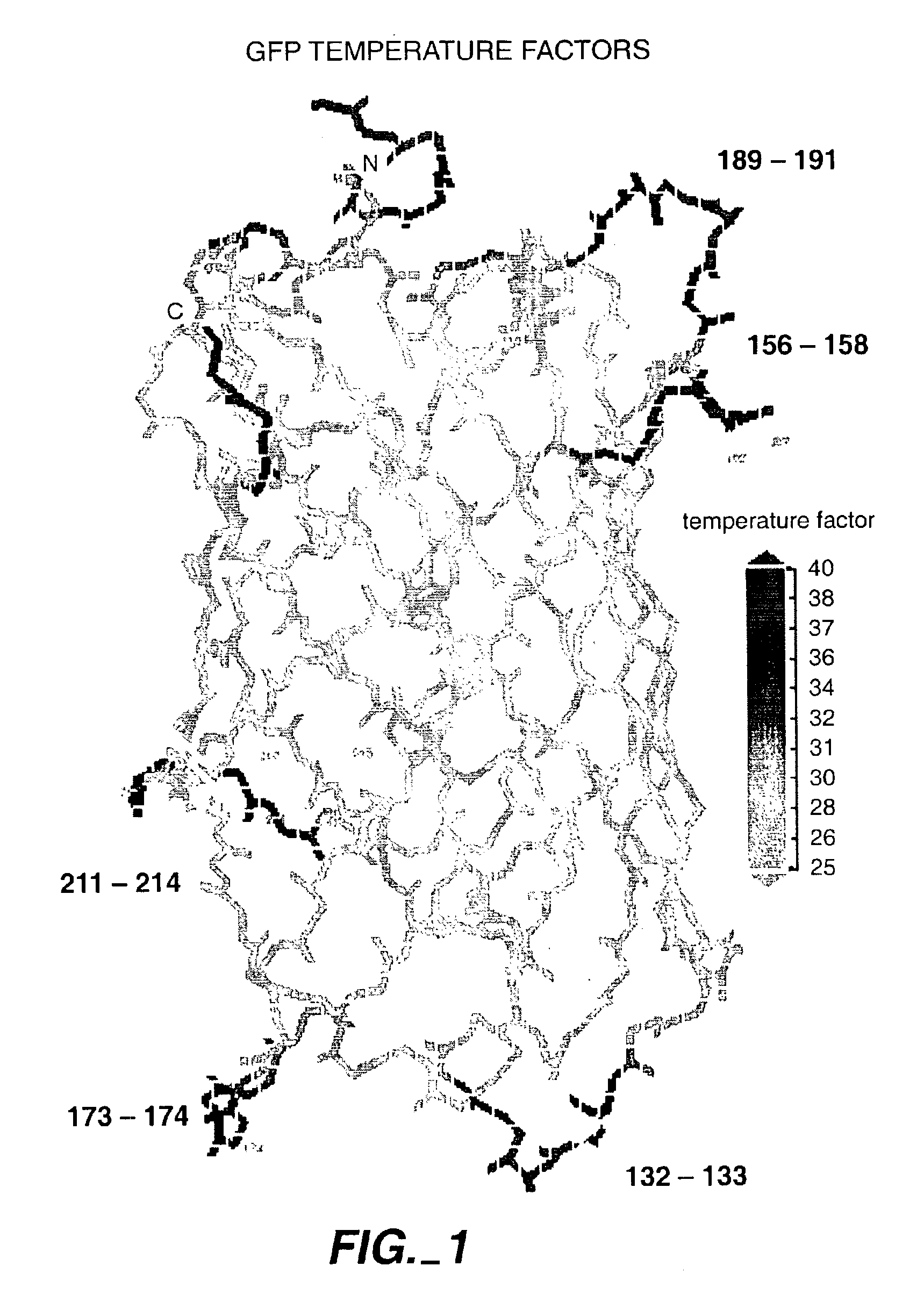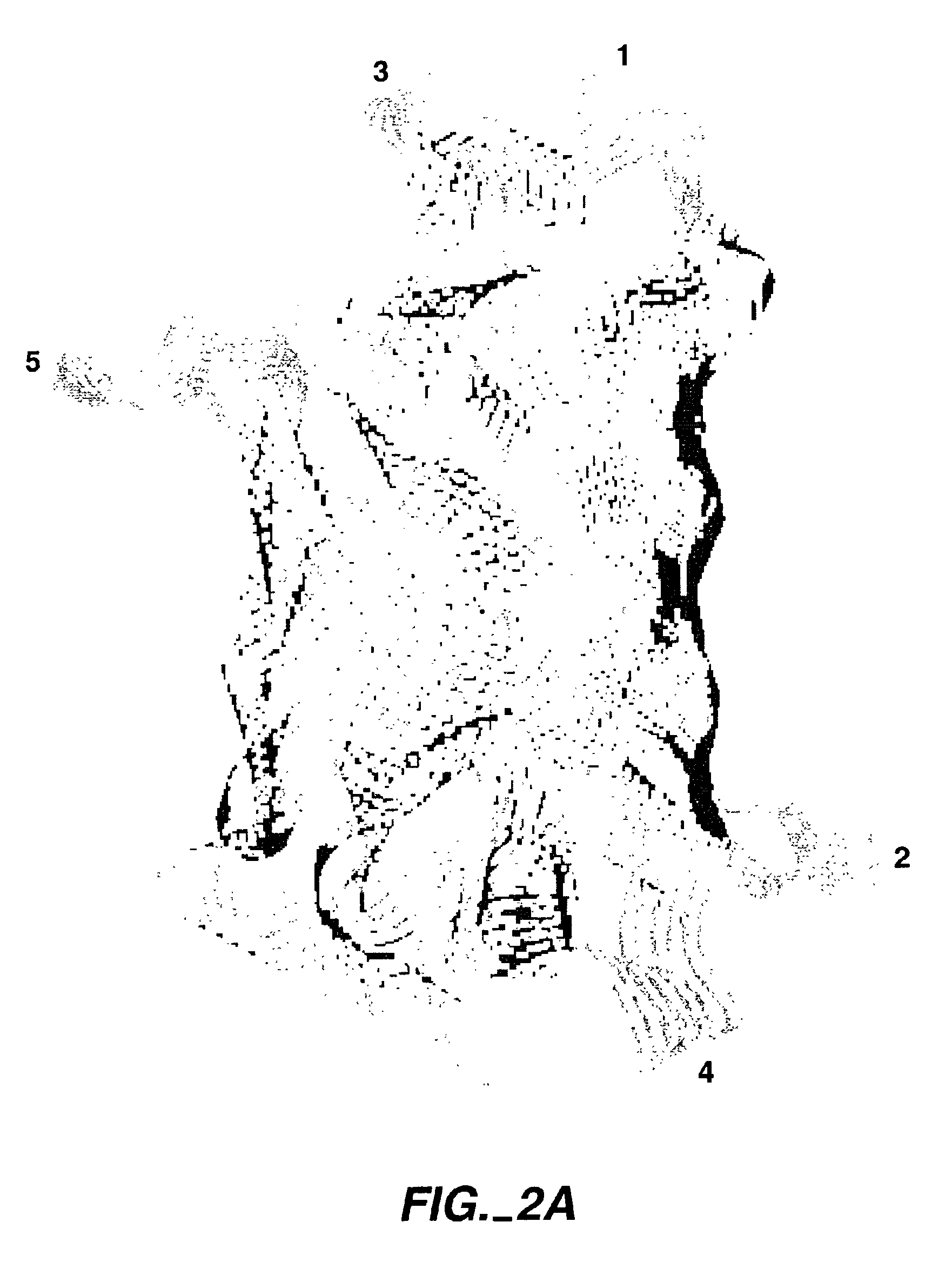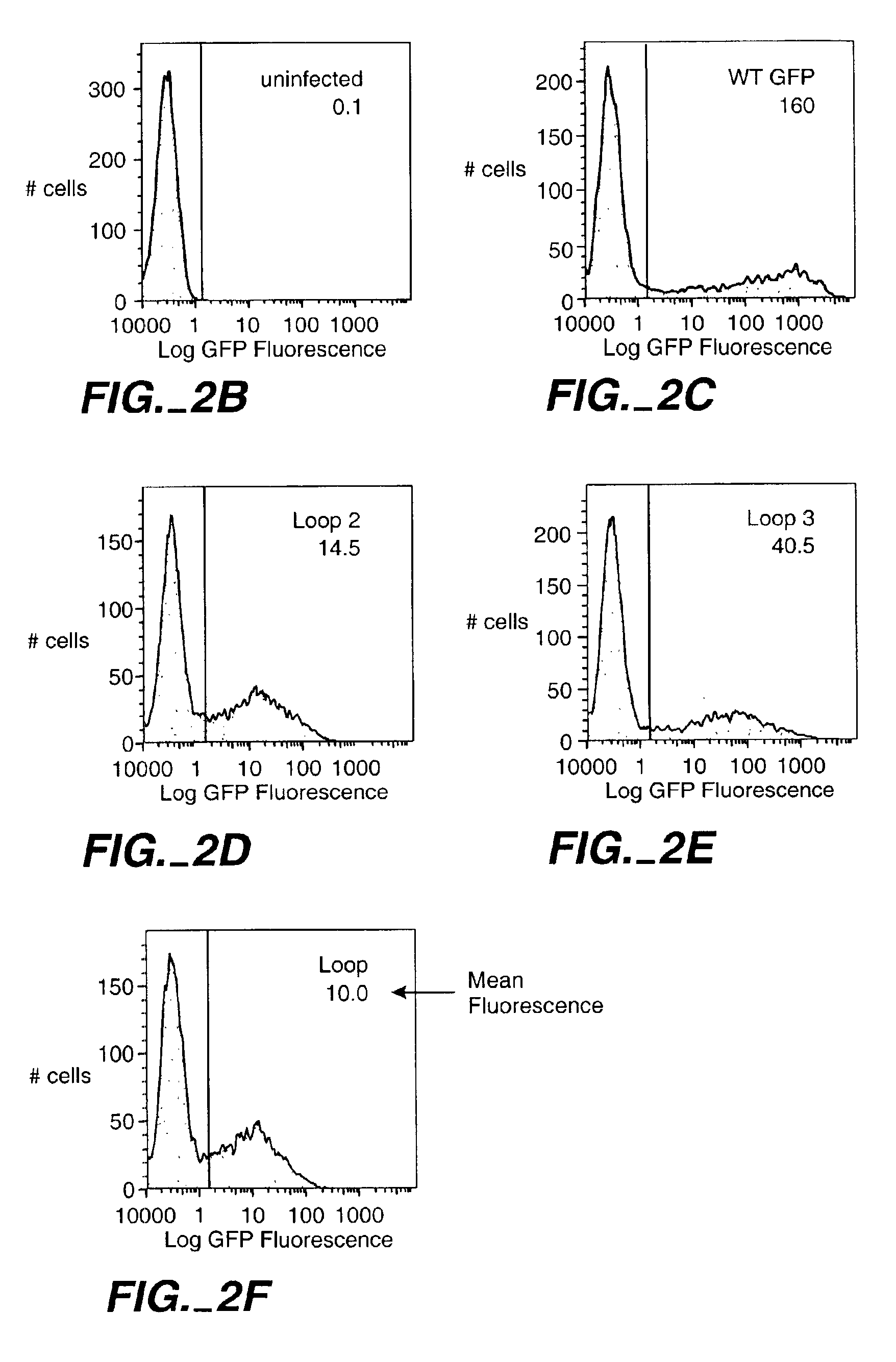Structurally biased random peptide libraries based on different scaffolds
a structure-biased random peptide technology, applied in the field of scaffold proteins, can solve problems such as difficulty in assessing whether a particular peptide has been expressed
- Summary
- Abstract
- Description
- Claims
- Application Information
AI Technical Summary
Benefits of technology
Problems solved by technology
Method used
Image
Examples
example 1
Selection of Loop Insertion Sites
[0408]One example concerns the insertion of sequences of the composition linker-test sequence-linker into defined sites within engineered GFP loops most likely to tolerate insertions. These loops were selected based on having mobility in the loop or tip of the loop well above that of the most rigid parts of the beta-can structure (Yang et al., Nature Biotechnology 14, 1246-9, 1996; Ormo et al., Science 273, 1392-5, 1996). The loops of most interest are those which are not rigidly coupled to the beta-can structure of the rest of GFP; this lack of rigid coupling may allow the most tolerance for sequence additions within the loops in a library construct. Loops can be selected as those which have the highest temperature factors in the crystal structures, and include loops 130-135, 154-159, 172-175, 188-193, and 208-216 in a GFP monomer. The temperature factor of the loop can be artificially increased by including flexible amino acids such as glycine in t...
example 2
Selection of a Test Insert Sequence
[0415]To allow a maximal number of different loop inserts or replacements in GFP to fold properly into a fluorescent GFP construct, it may be important to carefully select the linker sequences between the native GFP structure and the inserted sequences making up the actual library inserted into the loop One way to prevent problems in GFP folding is to conformationally decouple any insert sequence from the GFP structure itself, to minimize local distortions in GFP structure which could either destabilize folding intermediates or could allow access to GFP's buried tripeptide fluorophore of exogenous collisional fluorescence quenchers (Phillips, supra). This can be done by inserting multiple highly flexible amino acid residues between GFP and the library, which impose minimal conformational constraints on the GFP. One or more glycines are ideal for this purpose, as glycine accesses significantly more phi-psi space than even alanine, and is much less r...
example 3
Mean Fluorescence of GFP with Test Inserts 1 and 2 in Loops 1-5, Expressed in E. coli
[0417]The GFP used is EGFP (Clontech Inc., Palo Alto, Calif.) and the two test sequences were inserted at the sites indicated in example 1. An equal number of bacteria (20000) representing clones of a single colonies were analyzed by fluorescence-activated cell sorting on a MoFlo cell sorter (Cytomation Inc., Ft. Collins, Colo.). Intensity of FL1 was averaged. The relative fluorescence intensity was calculated as (WT fluorescence−fluorescence of loop insert) / (WT fluorescence−bkd)×100%. Constructs with insert 1 in loops 1 and 5 were not expressed due to cloning difficulties. Equal amounts of cell lysate from each loop insert were run on a 10% SDS gel and blotted to PVDF. GFP was detected with anti-GFP antibody and the bands were observed using chemiluminescent detection. The intensity of individual bands was measured using a Sharp JX-330 scanning densitomer and BioImage software. The specific fluore...
PUM
| Property | Measurement | Unit |
|---|---|---|
| Fraction | aaaaa | aaaaa |
| Fraction | aaaaa | aaaaa |
| Fraction | aaaaa | aaaaa |
Abstract
Description
Claims
Application Information
 Login to View More
Login to View More - R&D
- Intellectual Property
- Life Sciences
- Materials
- Tech Scout
- Unparalleled Data Quality
- Higher Quality Content
- 60% Fewer Hallucinations
Browse by: Latest US Patents, China's latest patents, Technical Efficacy Thesaurus, Application Domain, Technology Topic, Popular Technical Reports.
© 2025 PatSnap. All rights reserved.Legal|Privacy policy|Modern Slavery Act Transparency Statement|Sitemap|About US| Contact US: help@patsnap.com



